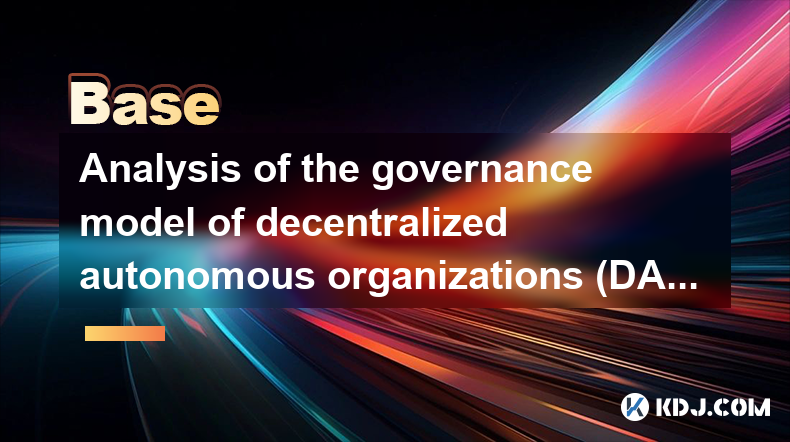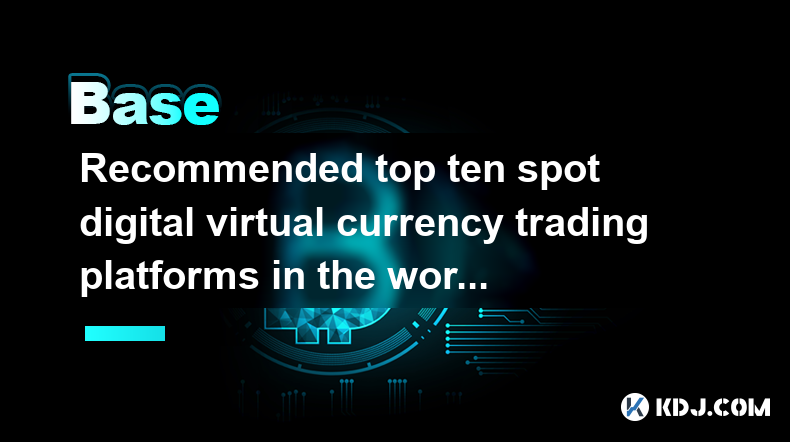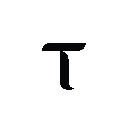-
 Bitcoin
Bitcoin $87,637.3009
3.62% -
 Ethereum
Ethereum $1,619.6345
2.40% -
 Tether USDt
Tether USDt $0.9997
-0.02% -
 XRP
XRP $2.1149
2.87% -
 BNB
BNB $602.1762
2.09% -
 Solana
Solana $137.8253
0.20% -
 USDC
USDC $0.9996
-0.04% -
 Dogecoin
Dogecoin $0.1607
4.00% -
 TRON
TRON $0.2420
-1.26% -
 Cardano
Cardano $0.6419
4.18% -
 Chainlink
Chainlink $13.4026
2.77% -
 Avalanche
Avalanche $20.3782
4.92% -
 UNUS SED LEO
UNUS SED LEO $9.0084
-3.44% -
 Stellar
Stellar $0.2566
6.15% -
 Toncoin
Toncoin $3.0111
1.38% -
 Shiba Inu
Shiba Inu $0.0...01251
1.78% -
 Sui
Sui $2.2326
5.85% -
 Hedera
Hedera $0.1696
4.46% -
 Bitcoin Cash
Bitcoin Cash $337.7284
0.90% -
 Polkadot
Polkadot $3.8972
1.25% -
 Litecoin
Litecoin $79.9963
5.10% -
 Hyperliquid
Hyperliquid $18.0042
2.62% -
 Dai
Dai $0.9999
0.00% -
 Bitget Token
Bitget Token $4.4458
2.27% -
 Ethena USDe
Ethena USDe $0.9992
-0.01% -
 Pi
Pi $0.6361
1.22% -
 Monero
Monero $215.1319
-0.70% -
 Uniswap
Uniswap $5.4058
3.91% -
 Pepe
Pepe $0.0...07908
6.59% -
 Aptos
Aptos $5.1454
2.71%
Analysis of the governance model of decentralized autonomous organizations (DAO)
DAOs use token-based, quadratic, reputation, and liquid democracy systems for governance, often combining them in hybrids to balance influence and participation.
Mar 29, 2025 at 09:56 am

Understanding DAO Governance: A Deep Dive
Decentralized Autonomous Organizations (DAOs) represent a novel organizational structure, leveraging blockchain technology to automate and decentralize decision-making. Their governance models are crucial to their success, determining how proposals are made, voted upon, and implemented. This analysis explores the various facets of DAO governance, highlighting the strengths and weaknesses of different approaches.
Token-Based Governance: The Foundation of Many DAOs
Many DAOs utilize a token-based governance system. Token holders have voting rights proportional to their token holdings. This system is straightforward and incentivizes participation, as token value can be directly impacted by governance decisions. However, it can also lead to wealth concentration, where a few large holders wield disproportionate influence, potentially undermining decentralization. Furthermore, the system's effectiveness depends heavily on the token's utility and the community's engagement.
Quadratic Voting: Addressing the Tyranny of the Majority
Quadratic voting is a mechanism designed to mitigate the influence of wealthy token holders. It assigns voting power not linearly with the number of tokens, but quadratically. This means that smaller token holders have a proportionally larger influence on the outcome compared to a linear voting system. While this addresses the tyranny of the majority, it introduces complexities in implementation and can be computationally expensive for large DAOs.
Reputation-Based Systems: Beyond Token Holdings
Some DAOs incorporate reputation systems alongside or instead of token-based voting. Reputation might be earned through contributions to the DAO, active participation in discussions, or successful past proposals. This system values active community members regardless of their token holdings, fostering a more inclusive and meritocratic governance structure. However, establishing a fair and transparent reputation system can be challenging, requiring sophisticated algorithms and community oversight.
Liquid Democracy: Delegating Voting Power
Liquid democracy allows token holders to either vote directly on proposals or delegate their voting power to other members they trust. This system combines the benefits of direct democracy with the efficiency of representative systems. Delegation can empower less active members while still allowing them to participate in the decision-making process. However, it's crucial to prevent manipulation through strategic delegation and ensure transparency in the delegation process.
Hybrid Models: Combining Different Approaches
Many DAOs employ hybrid governance models, combining elements of token-based voting, quadratic voting, reputation systems, and liquid democracy. These hybrid systems aim to leverage the strengths of each approach while mitigating their individual weaknesses. Designing an effective hybrid model requires careful consideration of the DAO's specific context and goals. The complexity of these systems can, however, create challenges in understanding and participation.
On-Chain vs. Off-Chain Governance
The execution of governance decisions can also vary. On-chain governance involves executing votes and proposals directly on the blockchain, ensuring transparency and immutability. Off-chain governance, on the other hand, utilizes external platforms for discussions and voting, which can facilitate more complex decision-making processes but may compromise transparency. The choice between on-chain and off-chain governance often depends on the DAO's technical capabilities and the complexity of its decision-making processes.
The Role of Smart Contracts in DAO Governance
Smart contracts play a critical role in automating DAO governance. They enforce the rules of the DAO, automatically executing proposals once they reach the required quorum and approval threshold. This ensures transparency and eliminates the need for intermediaries. However, smart contract vulnerabilities can have significant consequences, potentially leading to the loss of funds or control over the DAO. Therefore, rigorous auditing and security best practices are crucial.
Challenges and Future Directions in DAO Governance
Several challenges remain in DAO governance. These include ensuring broad participation, preventing manipulation, and addressing the complexities of hybrid systems. Future research and development will likely focus on improving the scalability, security, and usability of DAO governance mechanisms. Exploring new consensus mechanisms and incorporating advanced cryptographic techniques could also enhance the effectiveness and resilience of DAO governance.
Step-by-Step Guide to Participating in DAO Governance (Example)
- Identify a DAO: Research DAOs aligned with your interests.
- Acquire Tokens (if applicable): Purchase the DAO's governance token.
- Join the Community: Participate in discussions and forums.
- Understand the Governance Process: Familiarize yourself with the DAO's rules and procedures.
- Propose or Vote on Proposals: Contribute to the DAO's decision-making.
Frequently Asked Questions
Q: What is a DAO?
A: A DAO is a Decentralized Autonomous Organization, a community-led entity governed by rules encoded in smart contracts on a blockchain.
Q: How do I participate in DAO governance?
A: Participation methods vary depending on the DAO, but often involve holding and using governance tokens to vote on proposals.
Q: What are the risks of DAO governance?
A: Risks include smart contract vulnerabilities, manipulation by large token holders, and lack of community participation.
Q: What are the benefits of DAO governance?
A: Benefits include transparency, decentralization, and community-driven decision-making.
Q: What is the difference between on-chain and off-chain governance?
A: On-chain governance executes votes directly on the blockchain, while off-chain governance uses external platforms.
Q: What is quadratic voting?
A: Quadratic voting is a system where voting power increases quadratically with the number of votes, giving smaller holders more influence.
Q: What is liquid democracy?
A: Liquid democracy allows token holders to vote directly or delegate their votes to others they trust.
Q: How can I learn more about DAO governance?
A: Research various DAOs, read white papers, and participate in online communities dedicated to DAO governance.
Disclaimer:info@kdj.com
The information provided is not trading advice. kdj.com does not assume any responsibility for any investments made based on the information provided in this article. Cryptocurrencies are highly volatile and it is highly recommended that you invest with caution after thorough research!
If you believe that the content used on this website infringes your copyright, please contact us immediately (info@kdj.com) and we will delete it promptly.
- Atok Partners with Bitgert to Advance Infrastructure and Advertising Economy in Web3 World
- 2025-04-21 23:00:13
- Pi Network (PI) Coin Could Be the Next Cryptocurrency to Launch an Exchange Traded Fund (ETF)
- 2025-04-21 23:00:13
- Strategy, the world's largest corporate Bitcoin holder, has purchased 6,556 BTC for $555.8 million
- 2025-04-21 22:55:13
- Bitcoin (BTC) Price Prediction: Arthur Hayes Hints at a Final Opportunity to Buy BTC Under $100K
- 2025-04-21 22:55:13
- Binance Adds ZORA to Spotlight Projects on Binance Alpha Alongside Other Names
- 2025-04-21 22:50:12
- Bitcoin (BTC) Price Prediction: BTC Surges Nearly 5%
- 2025-04-21 22:50:12
Related knowledge

Recommended top ten spot digital virtual currency trading platforms in the world in 2025
Apr 21,2025 at 05:15pm
Recommended top ten spot digital virtual currency trading platforms in the world in 2025 1. Binance As the world's premier cryptocurrency trading platform, Binance is known for its extensive trading pairs and efficient trading services. Its features include: High Liquidity : Binance has huge trading volumes, ensuring users can trade at the best pric...

Ranking of top ten virtual currency trading apps in the currency circle (the latest authoritative list in 2025)
Apr 21,2025 at 10:28pm
The top ten virtual currency trading apps in the 2025 cryptocurrency circle are listed as follows: 1. Binance Binance is one of the world's leading cryptocurrency trading platforms, known for its efficient trading system and extensive currency support. Binance's user interface is designed with simplicity and is suitable for beginners and profess...

What are the digital currency APP trading software in 2025? Ranking of the top ten digital virtual currency trading apps
Apr 21,2025 at 08:42pm
Ranking of the top ten digital virtual currency trading apps in 2025 1. Binance Binance continues to maintain its position as the world's leading digital currency trading platform in 2025. Its advantages include: Efficient trading volume : Binance has top trading volumes around the world, ensuring users can trade efficiently at any time. Diverse tra...

Ranking of the top ten cryptocurrency trading apps in the currency circle in 2025
Apr 21,2025 at 08:49pm
Ranking of the three major virtual currency trading applications in the currency circle Binance: The world's leading cryptocurrency trading platform Binance has always been one of the pioneers in the cryptocurrency trading world. With its huge trading volume and a wide user base, it has become one of the most popular trading platforms in the world. ...

Top 10 best virtual currency trading platforms in the world ranked latest rankings for 2025
Apr 21,2025 at 10:00pm
Top 10 Most Popular Virtual Currency Trading Platforms in the World 1.Binance Binance is one of the world's leading cryptocurrency trading platforms, and is popular for its high liquidity and rich trading pairs. Binance supports over 500 cryptocurrencies and provides fiat currency deposit and cash withdrawal services. The platform interface is user-...

A list of the top ten digital currency trading apps in the world (2025 professional authoritative list)
Apr 21,2025 at 04:00pm
A list of the top ten digital currency trading applications in the world 1. Binance As the world's largest digital currency trading platform, Binance ranks first with its huge trading volume and rich trading pairs. Binance not only supports a variety of digital currency trading, but also provides a variety of services such as leveraged trading, futu...

Recommended top ten spot digital virtual currency trading platforms in the world in 2025
Apr 21,2025 at 05:15pm
Recommended top ten spot digital virtual currency trading platforms in the world in 2025 1. Binance As the world's premier cryptocurrency trading platform, Binance is known for its extensive trading pairs and efficient trading services. Its features include: High Liquidity : Binance has huge trading volumes, ensuring users can trade at the best pric...

Ranking of top ten virtual currency trading apps in the currency circle (the latest authoritative list in 2025)
Apr 21,2025 at 10:28pm
The top ten virtual currency trading apps in the 2025 cryptocurrency circle are listed as follows: 1. Binance Binance is one of the world's leading cryptocurrency trading platforms, known for its efficient trading system and extensive currency support. Binance's user interface is designed with simplicity and is suitable for beginners and profess...

What are the digital currency APP trading software in 2025? Ranking of the top ten digital virtual currency trading apps
Apr 21,2025 at 08:42pm
Ranking of the top ten digital virtual currency trading apps in 2025 1. Binance Binance continues to maintain its position as the world's leading digital currency trading platform in 2025. Its advantages include: Efficient trading volume : Binance has top trading volumes around the world, ensuring users can trade efficiently at any time. Diverse tra...

Ranking of the top ten cryptocurrency trading apps in the currency circle in 2025
Apr 21,2025 at 08:49pm
Ranking of the three major virtual currency trading applications in the currency circle Binance: The world's leading cryptocurrency trading platform Binance has always been one of the pioneers in the cryptocurrency trading world. With its huge trading volume and a wide user base, it has become one of the most popular trading platforms in the world. ...

Top 10 best virtual currency trading platforms in the world ranked latest rankings for 2025
Apr 21,2025 at 10:00pm
Top 10 Most Popular Virtual Currency Trading Platforms in the World 1.Binance Binance is one of the world's leading cryptocurrency trading platforms, and is popular for its high liquidity and rich trading pairs. Binance supports over 500 cryptocurrencies and provides fiat currency deposit and cash withdrawal services. The platform interface is user-...

A list of the top ten digital currency trading apps in the world (2025 professional authoritative list)
Apr 21,2025 at 04:00pm
A list of the top ten digital currency trading applications in the world 1. Binance As the world's largest digital currency trading platform, Binance ranks first with its huge trading volume and rich trading pairs. Binance not only supports a variety of digital currency trading, but also provides a variety of services such as leveraged trading, futu...
See all articles






















































































